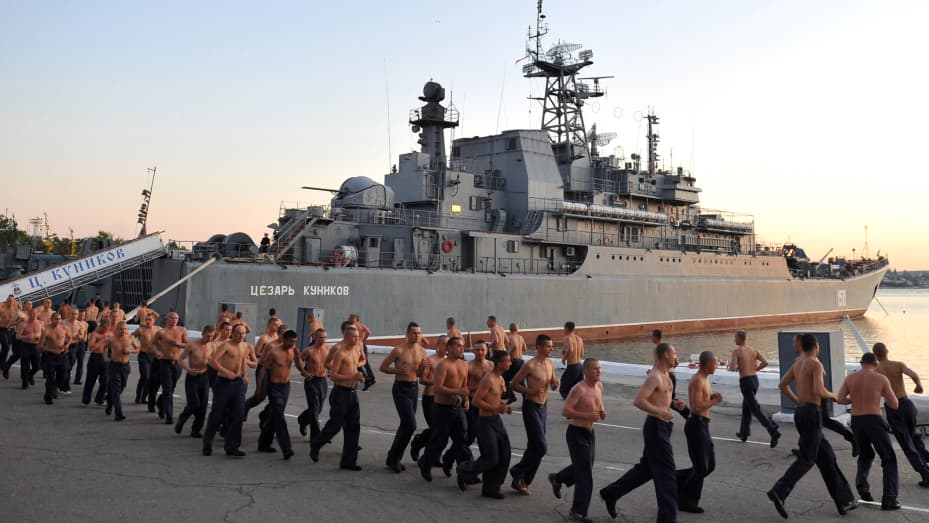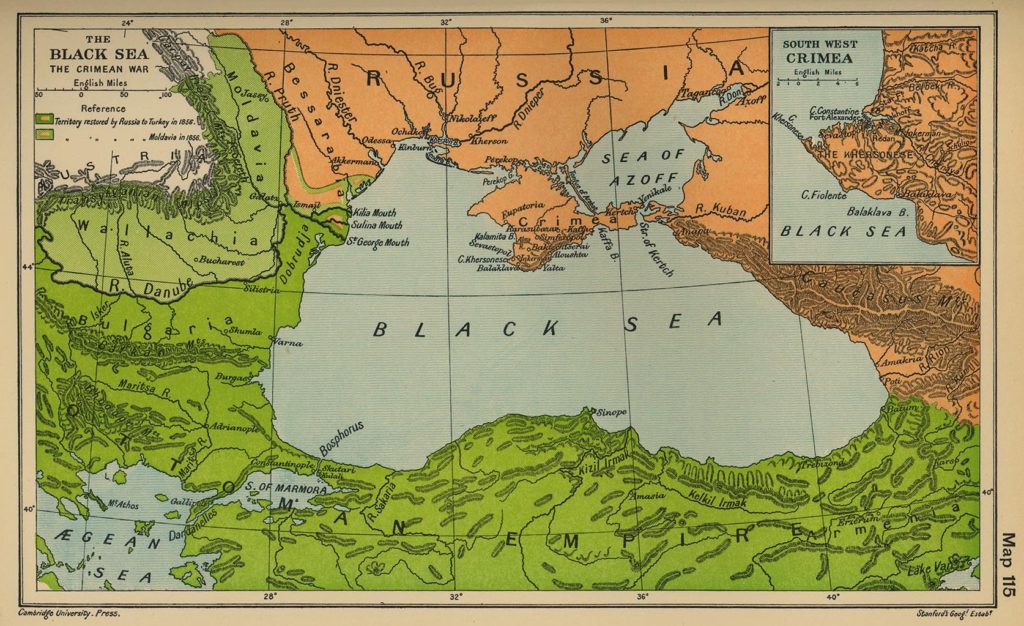Kiyv or Moscow? Understanding the cultural history of Crimea
When Crimea was annexed to Russia in 2014, political analysts disagreed on the reasons of such a gamble. Did Putin really fear NATO’s expansion through a pro-western Ukraine? Did he want to secure Russia’s control over a strategic territory? Was it just the beginning of a new Russian imperialism in the post-Soviet space? Concretely, despite official statements and economic sanctions, the international community had to accept a de facto unification of Crimea and Russia. With the Ukrainian invasion in February 2022, however, things changed: what the world saw was a clear imperialistic plan with deep historical, strategic and even psychological implications. After six months of war and a military stall, Ukraine, backed by the West (and only recently by Turkey) is claiming back Crimea. Trying to shed light on Crimean history in useful to show how Crimea’s potential return to Kiyv would be Putin’s personal geopolitical catastrophe.

The cradle of Christianity for Kievan Rus’
When Czar Vladimir I (958-1015) converted to Christianity, Kiyv was the capital city of Rus’, a kingdom that stretched over parts of today’s Ukraine, western Russia, Belarus, Moldova, Poland, Lithuania, Latvia and Estonia. Vladimir I was solemnly baptized in Crimea in 988, on the borders of the Byzantine Empire whose faith he was embracing.
At the time, Crimea was a peripheral part of the Byzantine Empire and Moscow did not exist: it was founded in 1147 as a small merchants’ town on the eastern border of the Russian state. The current capital of Russia gained more and more influence during the “Mongol yoke” (c. 1240-1400): Ivan I, Moscow’s Czar, known as “Moneybag”, managed to come to terms with the Kahn and was authorized to collect taxes on behalf of the Mongols on all Russian territories. Moscow became increasingly influential and wealthy until it was able to drive the Mongols out in 1380 and expand further into Asia.
Thus, by the ebbs and flows of history, although Kiyv and Crimea had brought Christianity to Russia, Moscow inherited the title of “the third Rome” when Constantinople fell to the Turks in 1453. When this happened, Kiyv was no longer in Russia – in 1330 it became part of the Grand Duchy of Lithuania – and Crimea was in the hands of the Turks.
Read also: La linea quasi ininterrotta che segna la storia della Russia
In the following centuries, Lithuanian and then Polish domination from the north and incursions by the Turks from the south generated a burst of national pride amongst the peoples occupying a part of present-day Ukraine. These peoples grouped under the Cossack Hetmanate (1649-1764), which, surrounded by hostile powers, asked the Russian Kingdom for protection and, in 1654, the Treaty of Pereyaslavl brought together “Ukrainians” and “Russians”. It is important to highlight this date from the midst of time as it is directly connected to our present. In was precisely to celebrate this treaty’s 300th anniversary that, in 1954, the handover of Crimea to the Soviet Socialist Republic of Ukraine took place, an event that lies at the core of today’s dispute between Moscow and Kiyv.
With Vladimir’s baptism Russia dipped its feet in the warm waters of the Black Sea but its body remained firmly anchored in the cold steppes of the north. From around 1200 to 1783, Crimea and the area surrounding the sea of Azov all the way to today’s Romania were controlled by the Mongols, then by the Tatars and the Ottoman Empire. Russia, which started to compete with European powers since the XVIII century, needed to access warm waters with its fleets to balance European great powers.
Catherine the Great (1729-1796) was able to gradually occupy the peninsula and the entire Crimean Khanate and marked the final annexation in 1783. The new lands were called “New Russia” and gave Petersburg the much-coveted outlet to the sea. Crimea was under Russian control for the first time in its history.
The Crimean War (1853-1856): the last crusade
The 19th century started with what seemed like a honeymoon between Russia and the major Western powers: having defeated Napoleon, the priority was to restore the ancien regime across Europe and its “legitimate” rulers with the Congress of Vienna (1815). As long as Czar Alexander I was alive, his prestige kept Russia in a mostly favorable light in European public opinion. However, the advent of Czar Nicholas I to the throne in 1825 was inaugurated with the execution or life exile of about 130 Decembrists, young aristocrats moved by liberal ideals who had organized an insurrection. In 1831, when Warsaw’s uprising was harshly repressed by Russian troops, Western powers (the United States included) violently condemned Russia’s actions. France had considered itself the center of liberal thought since the Enlightenment and Russia’s role as the guardian of Europe’s order was perceived as a threat to new emerging ideas.[1]
Growing conflicts between Russia and England for control of the Black Sea area did not help to lower tensions. Journalist and politician David Urquhart, the father of British Russophobia, contributed to spreading negative stereotypes about Russians. He played a significant role in focusing public attention to Petersburg’s control of the Danube delta area as a threat to international trade even if there was no evidence that that was the case[2]. And yet, it was not just about geopolitical reasons: the West, increasingly animated by liberal ideas and institutions, started to be wary of Russia’s imperialist autocracy. Russia, in turn, wanted to avoid Western influence and “to purify Russia from the pernicious germs” of liberal thought for which, according to Nicolas I, “the country was luckily not ready”[3].
That is the context in which one must place the Crimean War (1853-1856), which formally broke out for religious reasons: the question was then who, between Catholics or Orthodox, was to control holy centers in Jerusalem and Bethlehem. The war was fought by Russia against Britain, France, the Ottoman Empire and the Kingdom of Sardinia and it ended with Petersburg giving up Bessarabia and providing a demilitarization of the Black Sea. If the military outcome was not age-changing for the European order, the war had deep social consequences for all parties involved.
Some 40,000 English soldiers lost their lives. A monument made of melted bronze from Russian cannons was dedicated to “the glorious boys” in central London: it was the first time a monument was dedicated to simple soldiers. The names of battles and heroes of the Crimean War circulated everywhere in England. Even today, the names of streets and pubs evoke the war: Alma, Balaklava, Inkerman, Sebastopol, Cardigan.
In France, which lost about 100,000 soldiers, the names of great battles became the names of towns, squares and streets, still crossed by unsuspecting tourists: Pont de l’Alma, Boulevard Sebastopol, Rue de Crimée. There is even a small town named Malakoff in the suburbs of Paris, in memory of the fortress conquered in Sebastopol.
The Kingdom of Sardinia also participated in the conflict and lost some 2,166 soldiers. The Crimean War was Cavour’s great gamble, as he managed to bring up the question of Italy’s unification, which would take place shortly after (1861) thanks to France’s desire to weaken Austria and England’s hope of expanding its duty-free trade to southern Italy, where the Bourbons were adopting economic protectionism.

The psychological consequences this war had on Russia were unparalleled. References to Crimea in Russian literature are endless. Every Russian knows that Lev Tolstoy took part in the fighting against Western powers and collected his reflections in Sketches of Sebastopol, a blunt chronicle of the horrors of war. For Russia, the defeat of Sevastopol has remained a disgrace and a wound up to the present day. In the collective memory, Sevastopol became a sacred city. Throughout the 19th century, heroes of the war, such as Kornilov and Nachimov, were objects of literary works; the Black Sea fleet Museum was opened in Sebastopol in 1869. Even in Soviet times propaganda used their names to revive the patriotism of the Russian people, like in Pudovkin’s movie Admiral Nachimov (1947).
When the Soviet Union collapsed, Crimea remained part of Ukraine and Russia’s weakened state had no power to impose otherwise. The paradox did not go unnoticed: in Sebastopol and mainland Russia a nationalist movement emerged to ask for the reunification of Crimea and Moscow. As a nationalist poet wrote in the 1990s:
On the ruins of our superpower lies a big historical paradox
Sebastopol, the City of Russia’s glory…
Is not in Russia[4]
In 2006, the Russian Center for National Glory organized a conference on the Crimean War of 1853 with the support of Vladimir Putin’s administration. The conclusions of the conference sound premonitory today: “the war was not to be considered a defeat for Russia, but rather a moral and religious victory, a national act of sacrifice in a righteous conflict; Russians also should honor the authoritarian example of Nicholas I, a tsar who, though unjustly mocked by the liberal intelligentsia, had not hesitated to stand up to the West in defense of his country’s interests“.[5]
Crimea as the key to Putin’s Eurasian empire
As of the 2022 war, Russia’s effort concentrates on the Donbass and the Black Sea region showing how Crimea and the Black Sea area remain Moscow’s priority. In fact, with Ukraine ousted from the region the Sea of Azov will become a “Russian lake” connecting the Black Sea to the Caspian Sea through the navigability of the Don and Volga rivers. Putin would secure full dominance over two seas in which Russian military and commercial ships could navigate undisturbed.
If the Black Sea has been the center of vast economic and strategic interests for centuries, the Caspian Sea became a strategic hotspot during the 2015 war in Syria: from its waters, Russian ships launched missiles at ISIS bases to support the Assad regime.
Moscow’s growing maritime activism in the Caucasus, Middle East and Central Asia area is well examined in an essay published in 2016 by Captain Pierre Rialland in the French journal Défence Nationale. The author states that, with the control of the two seas, Moscow would have “the capacity to strike with cruise missiles a territorial belt 6,000 km long, encompassing 30 countries.” This would provide Moscow with greater influence over the Caucasus, Middle East and Central Asia.
Read more: The invasion of Ukraine as a tragic self-fulfilling prophecy based on policy mistakes
That is arguably Moscow’s long-term objective, as theorized by Alexander Dugin: in a multipolar world, rid of US domination, Moscow can become the center of a new anti-liberal Eurasian empire.
Russia is once again proposing an alternative to the Western world, as it did during the 19th and 20th centuries. Yet, unlike 1853, globalization is complicating things: the energy and food crisis show how war is the worst possible choice and that the time of “crusades” should come to an end. Furthermore, the presence of China’s trade routes and its interests in the Black Sea region further blur the picture.
Given the symbolic importance Russia attaches to Crimea and the anti-Western sentiment that Putin uses to build the post-Soviet Russian identity, the loss of Crimea could possibly be the end for Putin’s regime. Instead of projecting Russia’s power, the war would weaken Moscow both internally and externally. That might not be a victory for the West. Will Europe be able to face a new Russian revanchism in the years to come?
Footnotes:
[1] McNally, Raymond T. “The Origins of Russophobia in France: 1812-1830.” American Slavic and East European Review 17, no. 2 (1958): 173–89. https://doi.org/10.2307/3004165.
[2] Ardeleanu, Constantin. “Russophobia, Free Trade and Maritime Insecurity.” In The European Commission of the Danube, 1856-1948: An Experiment in International Administration, 29–49. Brill, 2020. http://www.jstor.org/stable/10.1163/j.ctv2gjwwx1.6.
[3] Ibid.
[4] Plokhy, Serhii. “The City of Glory: Sevastopol in Russian Historical Mythology.” Journal of Contemporary History 35, no. 3 (2000): 369–83. http://www.jstor.org/stable/261026.
[5] Quoted in Orlando Figes “Crimea”, Lane Allen, 2010.
